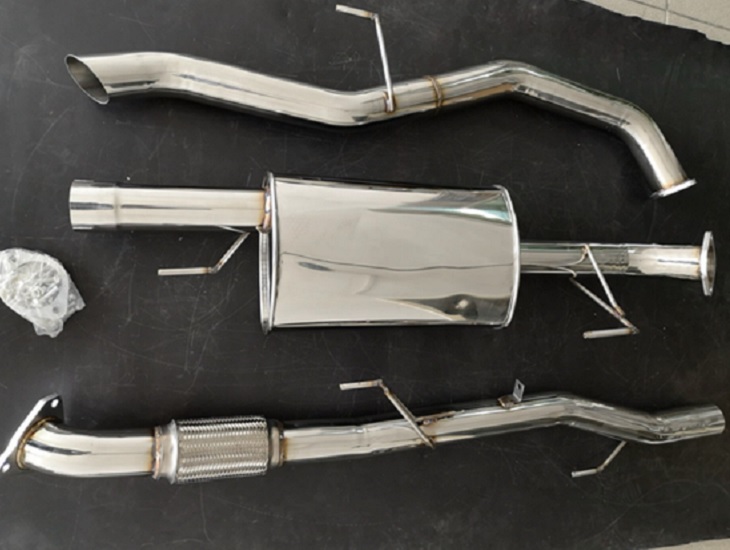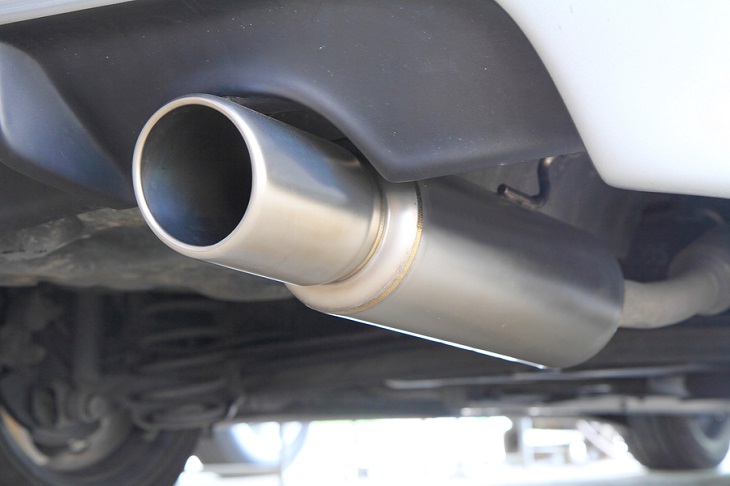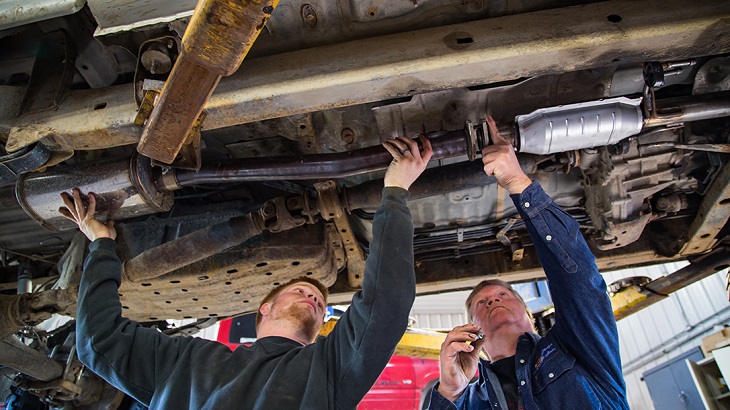Utes are outselling all other vehicles in Australia, and for good reason. They’re tough, comfortable, well-designed and well-specced. Always up to the job, be it off-roading, towing, hauling your gear, or just cruising around. And most models are sold with updated diesel engines, high torque output for good pulling power, and decent fuel consumption. With diesel generally cheaper at the servo than premium unleaded, there’s one more reason to go for a ute.
But like all cars, new or old, you can do a few modifications to get the best out of your diesel ute. Not that there’s anything to fault with a new showroom car, it’s just that you can do better. Changing your engine’s mapping or going for an aftermarket throttle control can give a little more oomph at the lights. But the biggest difference will be upgrading your stock exhaust. Installing an uprated exhaust system and improving air intake will add a few more ponies, think Clydesdales, and add a little roar if you want. Older diesels can also be modified. For example, a Nissan Navara D22 Exhaust Upgrade will bring life back into your old workhorse. You’ll get better towing power and a bit more speed without a drastic change to fuel consumption. And all this complying with current emissions regulations. Sounds good, right?

Parts in a Diesel Exhaust
Stock exhaust systems are complex designs intended for a balanced power/performance ratio. Without getting too technical, they consist of several parts: the exhaust manifold, a catalytic converter, a particulate filter, the muffler, and the exhaust pipes.
The exhaust manifold collects the exhaust diesel gases from the cylinders and expels them through the exhaust pipe to the catalytic converter. Here, the gases change their chemical structure reacting with the precious metals inside. A particle filter collects dangerous toxic particles, which either stores or burns the remnant gas. The cleansed gas goes through the muffler, where the noise of combustion is silenced through a system of perforated pipes and resonance chambers. The remaining gases exit through the tailpipe. The whole system is connected with a series of gaskets, flanges, nuts and bolts.
Regulations on emissions have meant that toxic particles need to be filtered before exiting. Diesel produces more harmful waste particles than petrol, so the need for a separate DPF filter on new vehicles.
Car manufacturers limit the gas flow through narrower piping to reduce material costs and to accommodate for the available space. Narrow pipes mean slower airflow, and the potential for more particulate buildup, putting stress on the catalytic converter and particle filter. In practical terms, it also means you’re not getting the full potential of your diesel engine. You’ll definitely notice a difference when you change to an aftermarket exhaust.

Materials
Each part of the exhaust needs to be durable enough to withstand the constant high temperatures and pressure exerted from combustion. The compression rate of diesel is much higher than petrol, and ignition doesn’t require spark plugs. A careful selection of materials will not only mean that your exhaust should last daily driving but also withstand outside influences like rainwater, dirt or salt. In short, materials need to have high melting points, be able to cope with corrosion and high thermal conductivity to allow for the even spread of heat.
To cope with these extremes, exhausts are made of high-tensile metals. Stainless steel is the decent budget choice for exhaust manifolds and piping. It provides good heat and corrosion resistance, while also being easy to tube. Higher grade exhausts will have titanium or nickel-based alloys, but will be considerably more expensive. Catalytic converters and particle filters will have a ceramic honeycomb cylindrical form, coated with precious metals like platinum and palladium for better particle absorption. Mufflers are mainly stainless steel, but aluminum and steel alloys are also seen. Piping is externally coated for heat and corrosion resistance.

Benefits of an Aftermarket Exhaust
As I mentioned above, cost savings by manufacturers both in terms of materials and sizing will mean your stock exhaust is adequate at most. Smaller, narrower tubes are cheaper to produce. By going for an aftermarket exhaust with larger and wider tubing, you avoid creating back pressure from the gas flow and higher exhaust temperatures. Better airflow will mean better air/fuel mixture, hence better performance. By using straighter tubes, gases exit quicker and at lower temperatures, and new air is sucked in.
But it’s not only the performance upgrade. There is less strain on the whole exhaust, meaning parts will last longer and potentially save you money in the long run. With less strain, there is better fuel economy, maybe not something to write home about, but definitely there. And then there’s the muffler note, with more space to work with, you’ll definitely hear more of the engine roar. All this can completely change an aging 4WD diesel ute.

Installing Aftermarket Exhausts
While manufacturers of aftermarket exhaust systems offer detailed installation instructions for your new exhaust, you might not feel like getting your hands dirty, and decide to get it professionally installed. No tooling or welding is required, but a nice, tight fit is a must if you want it to work as it should. All necessary parts are supplied with the exhaust kits.
Look for exhausts that match your make and model. Some exhausts might fit across a range of vehicles, especially rebadged models for particular markets. When changing the exhaust, you might also want to upgrade your air intakes. Snorkels are not just for show or not getting swamped, they also suck in larger amounts of clean air, which speeds up combustion. Also, check the condition of the air filters. Replacing them with new ones won’t break the bank.
You’ll find aftermarket exhausts at general automotive stores in addition to specialised stores selling tuning-specific products, likes throttle controls and ECUs. Prices vary among different brands, the materials used, and the exhaust for your particular vehicle. Factor in the cost of labour if you’re getting a professional fit. When you’re done installing, you can hook up your ute to a dyno, to see expected and real-world performance gains. But you’ll see, feel and hear the real difference once you’re on the road.



















